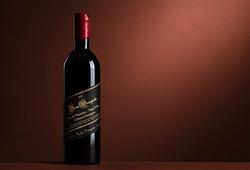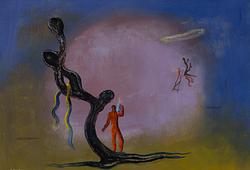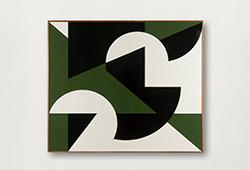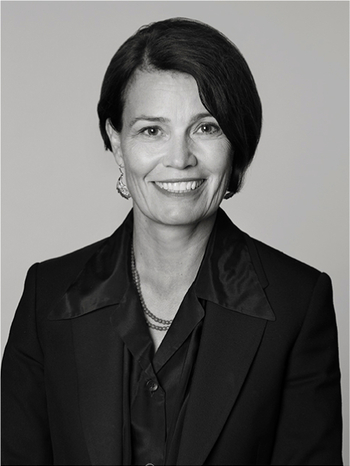Fernand Léger
"Jongleur et danseuse"
Signed F.L and dated -54. Gouache on paper laid on canvas, 18 x 22,5 cm.
Alkuperä - Provenienssi
Galerie Bourdon, Paris.
Acquired from the above in 1954.
Sotheby's, Paris, Impressionist and Modern Art, December 3, 2008, lot 52.
Acquired at the above auction.
Private Collection, Sweden.
Näyttelyt
Paris, Maison de la Pensée française, Fernand Léger, recent works, 1954, cat. no. 26.
Muut tiedot
In 1924, Léger founded the free art school, Académie Moderne in Paris, which became Europe's most modern teaching place for young artists. Among the first group of students were several Scandinavians, including Otto G. Carlsund, Franciska Clausen, Waldemar Lorentzon, and Erik Olson. At this time, mural painting became an important part of Léger's ongoing artistic practice. He wanted to take art to the streets, covering the city's buildings with gigantic colour compositions. "Why is it only the upper classes who own our paintings? Everyone should be able to enjoy the magic of colour and form. Let us take the paintings to the streets," he exclaimed. Léger executed his first abstract mural paintings for the major Art Déco exhibition in Paris in 1925. The young Swedish students Otto G. Carlsund and Erik Olson were able to work in Léger's studio in the following years, enlarging the teacher's sketches and smaller oils into larger monumental paintings. During World War II, Fernand lived in the USA, where he was engaged as a teacher at Yale University until he returned to his homeland in the mid-1940s. He continued to be productive in the last years of his life, working in various techniques until his death in 1955. Fernand Léger sought to make his art accessible to the people; art should be egalitarian. From the late 1940s onwards, he returned to themes including cyclists, outings in the countryside, and the circus – celebrating the leisure activities of the working class. The circus, in particular, is an accessible arena where all spectators are equal, united in their fascination with clowns, trapeze artists, and animal acts. The auction's "Jongleur et danseuse," painted a year before the artist's death, the same year as the work La grand parade (Guggenheim Museum, NY), is considered the culmination of his lifelong effort to both depict and reach an audience beyond the small circle of connoisseurs familiar with fine art.





































